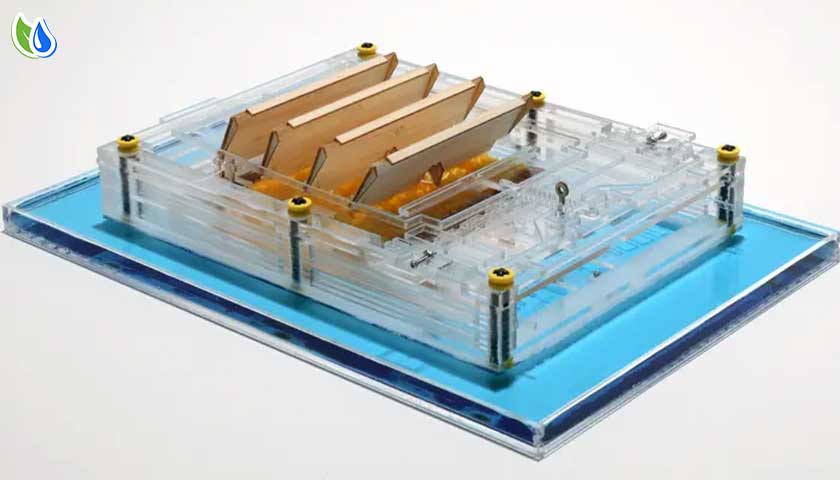
Harnessing the Power of Water Absorbents: Applications and Advancements
Water absorbents, also known as superabsorbent polymers (SAPs) or hydrogels, have become indispensable tools in a wide range of industries, offering innovative solutions to some of the most pressing challenges related to water management, agriculture, hygiene, and environmental sustainability. In this comprehensive article, we explore the diverse applications of water absorbents, the science behind their remarkable properties, and recent advancements in this field.
The Science of Water Absorbents
Water absorbents are synthetic materials engineered to have an exceptional capacity for absorbing and retaining water. They are typically derived from cross-linked polymer chains, which form a three-dimensional network capable of trapping and holding water through a combination of physical interactions and chemical bonding. The result is a substance that can absorb water many times its own weight, transforming into a gel-like state when in contact with liquid.
Water absorbents are classified into two primary categories:
1. Sodium Polyacrylate-Based Absorbents: These are commonly found in disposable diapers, sanitary napkins, and other hygiene products. They have a high absorption capacity for aqueous solutions and are frequently used for moisture management.
2. Polyacrylamide-Based Absorbents: These are employed in agriculture, gardening, and soil erosion control. They can absorb and retain large quantities of water, releasing it slowly to provide a continuous moisture source for plants and soil.
Applications of Water Absorbents
Water absorbents offer versatile solutions across various sectors, addressing a multitude of challenges:
1. Agriculture
Water absorbents are instrumental in modern agriculture, particularly in regions facing water scarcity. By incorporating these absorbents into soil, farmers can significantly reduce the frequency of irrigation. This not only conserves water but also enhances crop yields by maintaining optimal moisture levels for plant growth.
2. Horticulture
In gardening and landscaping, water absorbents are used to improve the water-holding capacity of potting soil. This not only reduces the need for frequent watering but also contributes to healthier plant growth. For avid gardeners and those with indoor plants, these absorbents are a game-changer, simplifying maintenance.
3. Hygiene Products
Water absorbents are a key component of disposable diapers, adult incontinence products, and sanitary napkins. Their ability to absorb and lock away liquid plays a crucial role in keeping users dry and comfortable.
4. Soil Erosion Control
In erosion-prone areas, water absorbents can be mixed with topsoil or hydroseeding materials to stabilize slopes and prevent soil erosion. This is vital in construction projects and ecological restoration efforts.
5. Environmental Restoration
Water absorbents are essential in rehabilitating damaged ecosystems. By ensuring a consistent water supply to newly planted vegetation, they facilitate the establishment of green cover in areas affected by wildfires or other disturbances.
6. Mining and Construction
Industries like mining and construction utilize water absorbents to control dust. When mixed with dust suppression solutions, they effectively reduce airborne dust particles, improving air quality and safety for workers.
Advancements in Water Absorbents
In recent years, research and development in the field of water absorbents have led to several noteworthy advancements:
1. Biodegradable Absorbents: The development of biodegradable water absorbents is a significant stride toward sustainability. These absorbents break down naturally over time, reducing environmental impact.
2. Smart Polymers: Researchers are exploring the integration of responsive polymers that can release absorbed water in response to specific environmental cues, such as soil moisture levels or temperature. This fine-tuned control can further optimize water usage.
3. Customized Formulations: Manufacturers are producing water absorbents tailored for specific applications. For example, some are designed to excel in saline environments, making them suitable for use in agriculture in coastal areas.
4. Wastewater Treatment: Water absorbents are being studied for their potential in wastewater treatment, where they can help in removing contaminants and absorbing excess water, contributing to cleaner water and reduced water waste.
The widespread use of water absorbents underscores their crucial role in water management, agriculture, hygiene, and environmental conservation. Their remarkable properties, coupled with ongoing research and development efforts, continue to drive innovations and expand their applications across industries.
As the world faces growing challenges related to water scarcity, sustainable agriculture, and environmental conservation, water absorbents offer a promising solution. By harnessing the power of these synthetic materials, we can achieve a more water-efficient, sustainable, and environmentally responsible future, addressing both the immediate needs of various industries and the long-term goal of preserving our precious water resources.




